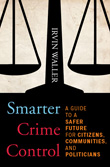Everyone knows that the USA has the highest rates of incarceration in the world. But not everyone knows that among affluent democracies, it also has the worst rates per capita for young men killed in homicides, traffic fatalities and drug related deaths. It is not just the war on drugs that has failed but the war on street violence and traffic safety.
The New Jim Crow hit the New York Times best seller list with its brilliant and irrefutable proof of the over-incarceration of young black men but even this did not call attention to the continuing epidemic of young black males getting killed. In proportionate terms these rates are worse than for incarceration.
Yet, the USA has amassed knowledge on what are cost effective ways to cut rates of homicide, traffic fatalities, and drug overdoses, … and on what does not stop violence. In 2014, current knowledge is not just in libraries and erudite journals but on the websites of prestigious organizations such as the US Department of Justice (crimesolutions.gov), the World Health Organization and the Centers for Disease Control and Prevention.
I have analysed this knowledge and put it together for legislators in a new book Smarter Crime Control: A Guide to a Safer Future for Citizens,Communities and Politicians . If politicians took the actions identified from the evidence, they would cut violence by 50% or more, saving $300 billion in harm to victims. If politicians stopped overusing incarceration and reducing expenditures on police, courts and corrections because there is less crime, they would save taxpayers $50 billion or more.
Chapters look at the limited extent to which policing, courts, and corrections can stop violence. Yes they have an important role in problem solving too but they must become advocates for the positive pre-crime prevention strategies.
Important chapters highlight successful pre-crime prevention actions (which are not part of the criminal justice paradigm), including for youth crime, violence against women, gangs and property crime. The chapter on criminals on the road shows the potential for policing and social investments to save lives.
The book confirms (i) the cost effectiveness to violence reduction of targeting investment to families and youth in problem places rather than only policing them, (ii) stopping intimate and sexual violence against women is as important as street crime to harm to victims and is preventable and (iii) policing traffic safety saves more lives than street violence.
Smarter ¨public safety reinvestment¨ is more equitable and would shift the US to having some of the lowest rates of young men killed and incarcerated and the least waste of taxes on big government. Why not use the evidence that the US has amassed to make cities safer, fewer victims and save taxes – all key political goals for both political parties.
The book is written from the perspective of how to stop violence – stopping citizens becoming victims of violence in the first place. It adds the perspective of taxpayers who want their hard earned contributions to government to be used effectively. It presents the conclusions from the scientific evidence in plain English so that legislators, funders and social pioneers can reduce violent crime (and avoid wasted taxes).
We have the knowledge and best practices to make mass incarceration and discriminatory punishment policies history and reduce the waste of taxes on what has not worked. The book organizes the knowledge to show how to retool policing, improve corrections, and make criminal courts more preventive. It confirms impressive returns on investment from helping youth in problem neighborhoods start on a path that does not lead to chronic offending, gang violence, and incarceration. It proposes promising ways to stop violence against women and fatalities on the roads. It shows how cities can take charge of making their neighborhoods safer for less.
There are many beginnings of a shift from the outdated criminal justice system – too often based on the ¨punishment only¨ paradigm that is failing, racially biased, and exorbitant to an effective, modern, fair and lean system for safer communities that spares victims from the loss and pain of preventable violence.
Smarter ¨public safety¨ is not just about the knowledge of what is cost effective but also about tackling the problems ¨upstream¨ and scientifically so that fewer lives will be wasted ¨downstream¨. The most effective and cost effective way to deal with crime is prevention. All the rest is picking up the pieces – unacceptable and tragic as they are.

